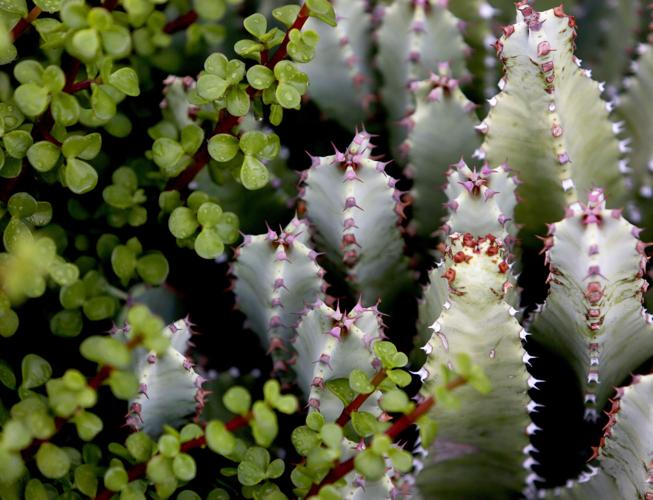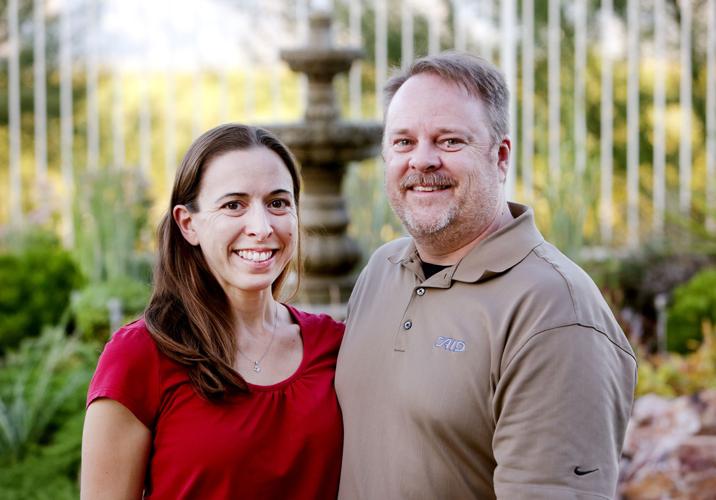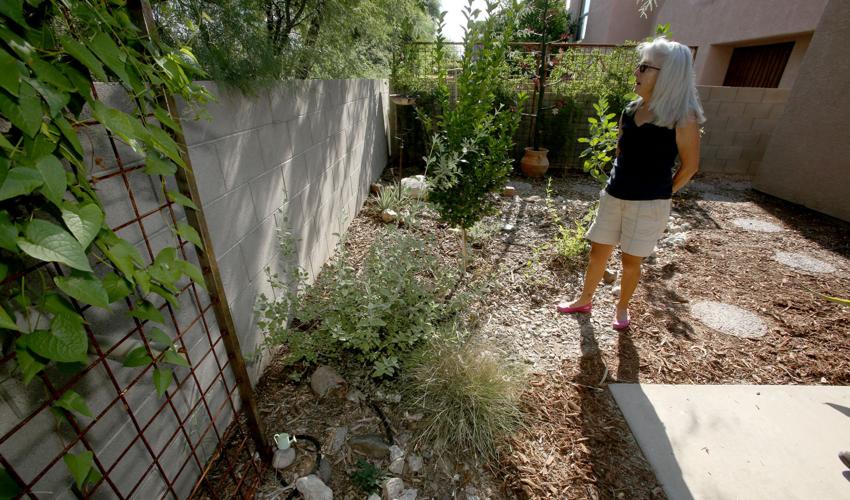Fill up the tank, get that bus pass, inflate your bicycle tires, put on your walking shoes. Fall garden tours are coming in October.
GOING GREEN
Kathleen and Mike Marron were new Tucsonans about a year ago when they bought their small north-side home.
“I’d never gardened in the desert before,” says Kathleen, an Ohio transplant who originally wanted to turn her pea-gravel-covered backyard into a flower-filled garden she saw in a Sunset magazine picture.
Then she spoke with someone at Watershed Management Group, which is holding its annual fall home tour Oct. 1. “They said that none of that was native and sustainable on their own,” she recalls.
Wanting to be responsible Tucson gardeners, the couple worked with the organization to shape the land in the tiny backyard so that rainwater runs along a modest, rock-lined channel where plants grow inside and along it.
They wedged rainwater receptacles between their house and the neighbor’s fence to collect 1,050 gallons of water from the solar-paneled roof. A hose connected to the receptacles allows them to water plants as needed.
Underground piping guides water from the laundry to tree basins.
Together, these efforts have allowed many plants to thrive solely on rain and gray water: queen’s wreath vine, barrel cactus, a peach tree, a sweet lime tree, a chiltepin bush and side-oats grama grass.
The landscape fosters volunteers, too, including a desert tobacco that’s over 5 feet tall and some desert marigolds.
The only time they turn on the drip irrigation is when they’re away for a few days.
Marron says she’s learned several tricks about watering that save resources, including responding to seasonal changes.
“I know now that these plants go dormant in the winter,” she says, “and I don’t need to water them.”
Marron hopes tour visitors will get some ideas from her small landscape.
“I hope they can think of creative ways to use their spaces,” she says, “and create green space that will cool Tucson and replenish the aquifer.”
The tour also will highlight composting bins and toilets, wildlife habitat, shade oases and uses for recyclable materials.
BICAS will lead a guided bicycle tour of five stops and hold a lunch at Watershed Management’s Living Lab.
VEGGIE GARDENING
The fairly new edible garden for Pascua Yaqui seniors will show off the fruits — and veggies — of community labor during a tour Oct. 1.
The 10-bed community garden at the tribe’s senior center has been growing produce since spring 2015, says Pete C. Rodriguez, one of the volunteers who tend the garden.
Some elder tribal members have done some planting, and a slew of volunteers has been taking care of and harvesting the bounty, which is used by the senior center.
Organizers hope to expand the use of the garden by the general tribal community, as well as get the seniors more involved in gardening, Rodriguez says.
The tour will highlight growing gourds that, when dried and carved, are important accessories in Yaqui cultural ceremonies. Gourd carvings, rattles and musical instruments will be displayed. Yaqui artist Louis David Valenzuela will be on hand to show his gourd works.
RITA RANCH GARDENS
As an avid snorkler, Lance Belhumeur loves the look of coral reefs.
The manufacturing project manager also is a wannabe landscape designer.
“I’ve always thought it would be a great profession,” says Lance, whose garden is among at least 10 that will be on the Rita Ranch Areawide Fall Garden Tour Oct. 29.
“I’ve always loved landscapes and landscaping.”
He combined his two hobbies to create a reef-like garden in the backyard of the home he and his wife, Anna, had built two years ago.
Lady slipper, small agaves, aloe and Autumn Joy sedum are among the 100 or so plants that surround a fountain, which provides watery sounds.
Lance and Anna themselves built the well-ordered backyard, the 10th landscape Lance has designed by himself. “I do all the manual labor and leave all the design elements to him,” Anna jokes.
The couple divided the yard into dining, cooking and gathering spaces. A trampoline and artificial turf area provide recreational space for their four sons. Large rocks define the garden beds.
Two other garden areas include a pomegranate and a fig tree, which Anna wanted, and roses, a nod to Lance’s mother’s love of the flowers.
Lance focuses on perennial flowering species, which live longer than annuals. If a plant dies, he will find a different species as a replacement.
He’s not inclined to baby plants to keep them alive. He calls that philosophy “beauty by attrition.”
The neighborhood tour also includes a plant sale, pumpkin-carving contest and a guided bicycle tour.









